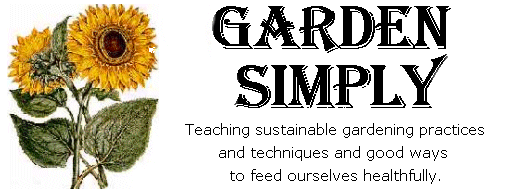
|
| Home | Reading Room | Newsletter | Reminders | Technique | Nursery |
| News | Sustainable Gardening | Trees & Shrubs | Flowers | Composting | Soil |
| Shopping | Tools | Books | How To's | Practical Advice | Children | IPM |
Home
Plant NamesNo-one knows how many different plants there are on the planet. New ones are being discovered every year. The gardener's bible, from the Royal Horticultural Society The Plant Finder, lists all the hardy plants available in Britain and where to buy them. It has more than 70,000 different plants listed. This does not include fruit and vegetables, or specialist plants, such as cacti and orchids!With such large numbers, it is clear that huge confusions are just waiting to happen, unless there is a system by which each plant has a unique name. Thankfully such a cunning system already exists, and it allows gardeners all over the world to communicate, even if they don't speak the same language. It was invented by a Swedish chap called Carl von Linne (Carl Linnaeus) in 1753, so it's tried and tested. Find out more about Carl Linnaeus at The Linnean Society of London. But there is one thing about Linnaeus's system that scares people - it's in Latin. This is deliberate. Because no-one speaks it, it's a universal language. So gardeners in Brighton, Bangalore, Brisbane and Boston will all know what Crocus sativus is - the crocus from which the spice saffron is derived. Why don't we use its 'common name'? It can cause confusion as a single common name sometimes refers to several different plants. For example, in the UK, woodbine is the common name for honeysuckle (Lonicera pericyclamenum), while in the US it is used to mean a clematis (Clematis virginiana). Even in the UK some of our common wild flowers have many different common names (not always polite!) depending on what part of the country you are in. But don't be put off. Latin names are as easy to use as common names. Page Two
Genus and species Etiquette demands that the Latin name be in italics, with a capital letter for the Genus, lower case for the species. So, I hear you cry, some plants have three Latin names, separated by subsp., or var. Some have an 'x'. And what's with the words in quote marks that aren't in italics? Well, here goes… Subspecies, varieties and forms In the wild, there will be the 'species' plant, which just has the Genus and species name. But nature is a contrary beast and plants may evolve that are very similar to the 'species' but have subtle differences. A subspecies is a distinct variant, usually based on geographical location, and its name is written Genus species subsp. Subspecies. For example, here's a spurge called Euphorbia characias subsp. wulfenii. A variety is a plant that has a slightly different natural botanical structure. Its name is written Genus species var. variety. For example, Phyllostachys nigra var. henonis is a variety of black bamboo. A form is a plant that has a minor difference to the species, such as leaf colour, flower colour or fruit. Its name is written Genus species f. form. The form Rosa rugosa f. alba has white flowers. Often the 'f' is left out, so you will see the name written Rosa rugosa alba. Page Three Cultivars and hybrids A cultivar is any new plant that comes about in cultivation (rather than in the wild). This is regardless of whether the new plant was 'planned' - the result of a plant breeder deliberately hybridising (crossing) two plants of the same genus - or whether it is an accident - the result of plants doing it themselves! The cultivar name is written Genus species 'Cultivar', for example, Rosa rugosa 'Scabrosa'. Etiquette demands that a capital letter is used for the cultivar name and that it is in quotation marks. Sometimes the parents' names are not known, or have been lost in the mists of time, so only the Genus and Cultivar names are used. For example, Dahlia 'Bishop of Llandaff' or Phormium 'Sundowner'. A hybrid is a new plant that is the result of a cross between two botanically distinct species. The name x Genus species. Most crosses occur at species level. For example; Forsythia x intermedia 'Lynwood', which is as a result of crossing Forsythia suspensa with Forsythia viridissima. Relatives Another great benefit of Latin names is that you can see quickly which plants are related as they have the same Genus name. There are more than 3,000 types of rose available in the UK. And if you really 'get into' names you'll find that every Genus belongs to a bigger group called a family. So, believe it or not, tomatoes, potatoes, chillies and deadly nightshade all belong to the same family, called Solanaceae. Then there are roses, strawberries, pears, apples, and hawthorn - they're members of the Rosaceae family. Page Four Learning the Latin names As you learn a bit of Latin, you'll find you can often tell something about a plant from its name. Find out more about Latin naming with our fun game! Colour
alba/albus = white Smell
foetida/feotidus = smelly Origin
chinensis = China Habitat
aquatica/auquaticus = water Shape
reptans = creeping Sometimes a prefix or suffix is used:
grandi- = large
|
| Reading Room | Trees and Shrubs | Flowers | Composting | Soil | Nursery |
| Shopping | Books | Tools | News | Internet Gardening | Links | Support |
| Vermicomposting | Pest Management | How To's | Practical Advice | Children |
| Home | Newsletter | About Us | Support | Contact |
|
GardenSimply.com | All Rights Reserved 2005 |
|
FREE
Garden Journal!! Join "Garden Notes" and plan for Harvest
Success as you track and record your gardening progress. Your Free Personal
Garden Journal includes printable pages making it easy for you to:
|
|
|
|
|
|
|
|
|
|

|
|
|
|



